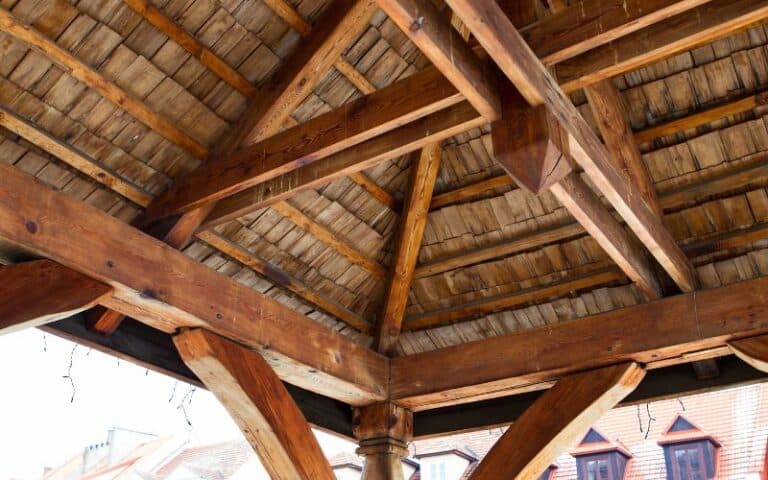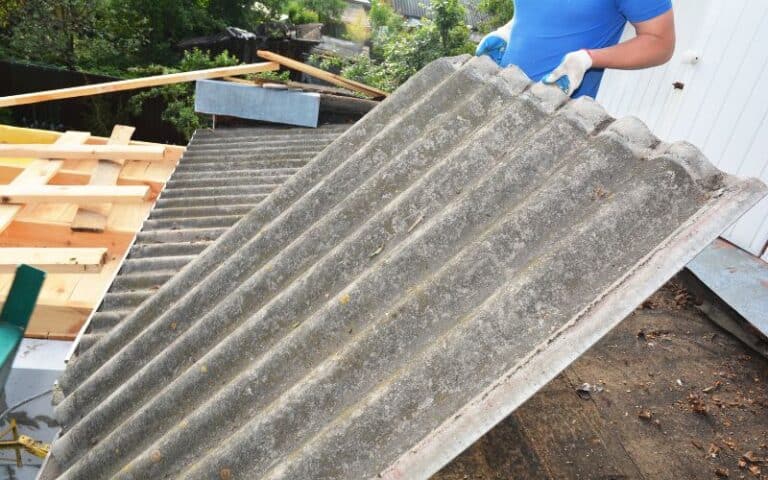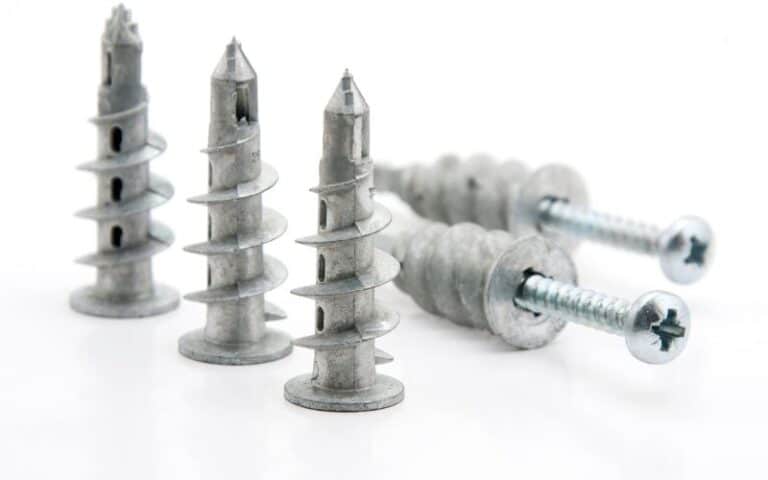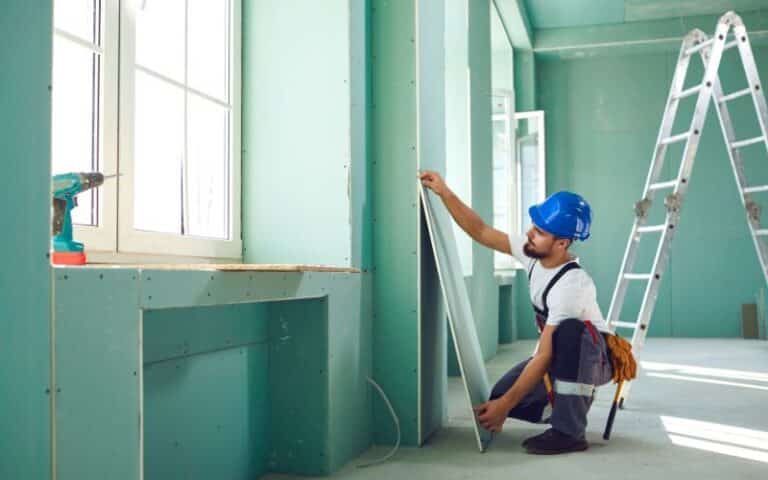Driving a screw through an MDF can be challenging because of the board’s brittle nature. It tends to split and collapse under the impact of a screw.
Therefore, using suitable screws for your wood project is essential. However, drywall screws are common and mostly preferred for wood projects.
But knowing if you can use them for MDF projects is vital. So it would help to read this article to the end.
Drywall screws are not good for MDF because the board is brittle and can’t support the impact of the screws. The drywall screw will divide the MDF fibers and make the board split when you screw it in. However, you can use drywall screws on the board if you make pilot holes. The holes will prevent the board from splitting.
In this article, I will explain if drywall screws are good for use with MDF, if you need special screws, and what screws you should use with MDF.
By the end, you’ll also learn how to stop MDF from splitting when screwing.
Ready for a Roofing Quiz?
Ready for a Drywall Quiz?
Are Drywall Screws Good for Use With MDF?

Drywall screws are not good for MDF use because the MDF’s texture can’t support the impact of the screws.
MDF is brittle and splits when you screw it because the drywall screw acts as a divider and forces the MDF fibers to separate.
It tears the fiber apart to create space for the drywall screw. But some drywall screws are perfect for MDF, such as fine-threaded drywall screws.
This screw enters the wood without damaging it. But, it would help to use the right tool and instructions when screwing it in.
Larger screws will split the board on impact due to their force and size. The larger the screw, the greater the tendency of the board to split.
When the fiber splits, it holds the screw loosely, and any woodwork you used the MDF to create will crash soon because the screws holding them together is loose.
However, if you make pilot holes, you can use drywall screws for your MDF project. Pilot holes will reduce the impact of the screws on the board.
It would help to give enough space around the screw to prevent splitting. The hole will also make your work neater.
However, the pilot hole isn’t large enough if the board keeps exploding and swelling while driving in the screw.
You will have to use a bigger drill to make the hole. Creating a big pilot hole, especially around the board’s edges, is essential.
Although, it may still split when the screw penetrates through it. Hence, it is best to glue solid wood blocks at different intersections and use screws on the wood instead.
However, the crack may not move to other parts when the board splits around the hole edges. So, you can still manage it, but don’t expect the screw to be tight.
In addition, after creating a pilot hole, you can try different types of drywall screws with various threading to see which fits snugly.
The correct drywall screw thread is essential because the wrong thread can easily split the wood.
Do You Need Special Screws for MDF?
You need to use special screws for MDF because of its delicate feature. There are appropriate screws that work effectively on MDF.
Using the wrong type of screws can make the wood crack or split. You can always find screws specially designed for MDF at the hardware store.
The suitable screws for MDF have a sharp point and thin shaft to penetrate the wood easily without splitting it.
However, you can also use standard screws for MDF. But you need to create a hole to insert the screw so it doesn’t damage the wood.
Using standard screws is stressful and time-consuming, so it may not be ideal for your work. Plus, you also run the risk of the wood splitting and becoming useless.
What Screws to Use With MDF?
Depending on the purpose and position, there are different screws to use with MDF because each screw serves a different purpose on the board.
Some screws are best for attaching the board to something else, while others are best for holding the board together.
Here are the screws to use with MDF.
#1. Flathead Screws
The flathead or countersunk screws are the most common type of screw to use with MDF. The screw enters the board smoothly without damaging it.
The flathead screw has a broad flat head that allows you to grip the screw easily. This screw has a lot of surface area and efficiently holds the board together.
However, the flathead screws may be unable to grip and turn into the board’s surface because of its thread.
It makes it challenging to use them for wood projects. In this case, it is best always to use screws that have a coarse thread.
The thread distance on the coarse thread screw is wider than that of a fine thread screw. Although, the latter is generally stronger than coarse-thread screws.
But, the distance between the threads helps to reduce the tearing when you screw them into MDF. So, the wood fibers do not separate as it does with other screws.
#2. Panhead Screws
Panhead screws are another type of screw that is suitable for MDF. The screw has a smaller flat head compared to countersunk screws.
It has a smaller surface area, but its head makes it easier to grip. The Panhead also holds the MDF board together effortlessly.
However, this screw may not flush with the surface of the MDF like the countersunk screw. Although the flat head and pan head screw work similarly, some features distinguish each.
The table below outlines the differences between flat-head and pan-head screws.
| Flat Head | Pan Head |
|---|---|
| It flushes with the MDF surface. | It is evident on the board surface. |
| It has a flat top surface. | The surface may be flat or slightly round. |
| It has a cone-shaped bearing on the underside. | It has a flat load bearing on the underside. |
| It does not tend to protrude. | It is prone to protrusion. |
#3. Phillips Head Screws
The Phillips head screw is distinguishable with its cross-shaped head and large surface area. They are efficient for holding the MDF firmly together.
Driving in this screw requires less force; you only need a Phillips head screwdriver. You can also use a slotted screwdriver, depending on the size of the screw.
How Do You Stop MDF From Splitting When Screwing?
MDF tends to split whenever you screw into them because of their nature. The board may seem strong, but it is also easy to break.
This issue can make it challenging to use screws on MDF. However, some tips can help you reduce the amount of splitting on your MDF.
Here are the tips you can use to stop MDF from splitting when screwing.
#1. Drill a Pilot Hole
Pre-drilling a pilot hole helps the screw to enter the board without splitting it. The splitting of fibers reduces when you have a hole to put the screw in.
It would help to use a drill bit diameter of 85 to 90 percent of the diameter inside the screw’s threads (root diameter). The hole should also be a little deeper than the length of the screw.
#2. Use Special MDF Screws
The MDF density determines what screw designs you use, so the screw for different boards can vary. But the screw has to be long instead of fat.
However, the screw shouldn’t be too long or too brittle, so it doesn’t do the board split. It would help to use special MDF screws.
The ideal screws for the board should have a narrow, long, and straight shank. It should also have an aggressive tread pattern.
#3. Use a Sharp Drill Bit
It is essential to use a very sharp drill to make the hole so you can get a neat cut effortlessly. The drill may slip and damage the bore if you use a dull bit.
If you cannot make a clean cut into the MDF, you can drill a small hole instead and drive a nail into the spot.
The nail will stand as a support besides the screw and hold the screw in place.
#4. Drill on Slow Speed
You must be careful while drilling the MDF because of its brittle nature. Hence, it is best to drill the hole slowly to avoid splitting the board.
A sharp drill bit and slow drill speed will give you a neat hole to make your project easier.
#5. Use a Countersink
It is best to use a countersink so the screw can blend with the board without splitting it. In addition, the countersink allows the screw head to stay below the board’s surface.
When the screw sits below the surface, it cannot pop out. The result of your project will also be neat.
#6. Glue the Screw
To strengthen the threads and make the screw glue to the MDF, add a few drops of epoxy into the hole before screwing.
Although the epoxy hack may not apply in all cases, you can try it out to see if it works for your project. You can also use some best quality wood glue to keep it in place.






